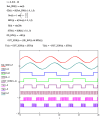Twenty-Meter Laser Strainmeter "Popova Isl."
- PMID: 39275699
- PMCID: PMC11398189
- DOI: 10.3390/s24175788
Twenty-Meter Laser Strainmeter "Popova Isl."
Abstract
This paper describes the design and principle of operation of a 20 m laser strainmeter of unequal-arm type created on the basis of a Michelson interferometer and frequency-stabilized helium-neon laser. The interferometry methods used allow the measurement of the displacement of an Earth's crust section on the base of the laser strainmeter with an accuracy of 30 pm in the frequency range from 0 (conventionally) to 1000 Hz. This laser strainmeter, when connected to an accurate time system providing an accuracy of 1 μs, should structurally become a part of the laser interferometric seismoacoustic observatory, consisting of spatially separated laser strainmeters installed in various regions of Russia.
Keywords: Michelson interferometer; laser strainmeter.
Conflict of interest statement
The authors declare no conflicts of interest.
Figures
















References
-
- Vali V., Krogstad R., Moss R. Interferometer with OKG for measuring deformations of the Earth’s surface. PIEREE. 1965;9:186–194.
-
- Vali V., Krogstad R. Laser interferometer with a base of 1000 m. Rev. Sci. Instrum. 1968;39:52–61.
-
- Berger L. Laser measurement of crustal deformations. Rev. Sci. Instrum. 1969;40:41–48.
-
- Volnov M.I., Garnov V.V., Gubin M.A., Nikitin V.V., Petruhin L.I. Laser geophysical seismograph. Preprint. 1979;144:29.
-
- Takemoto S., Araya A., Akamatsu J., Morii W., Momose H., Ohashi M., Kawasaki I., Higashi T., Fukuda Y., Miyoki S. A 100 m laser strainmeter system installed in a 1 km deep tunnel at Kamioka, Gifu, Japan. J. Geodyn. 2006;38:477–488. doi: 10.1016/j.jog.2004.07.008. - DOI
LinkOut - more resources
Full Text Sources

